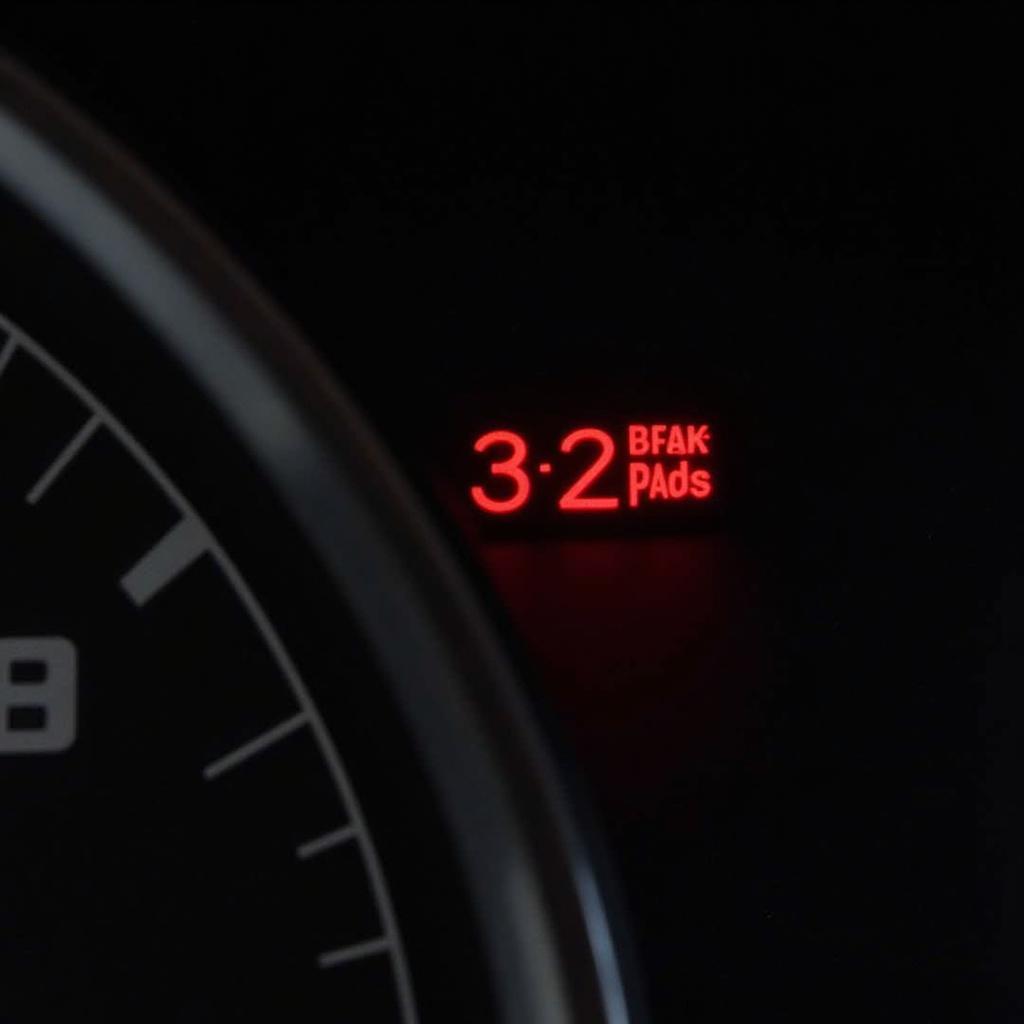The brake pad warning light on your Seat Exeo is a crucial safety feature, illuminating when the brake pads wear down and require replacement. Ignoring this warning can lead to compromised braking performance and potential safety hazards. This comprehensive guide will delve into the causes, symptoms, and solutions for a Seat Exeo brake pad warning light, empowering you with the knowledge to address this issue effectively.
Understanding Your Seat Exeo Brake Pad Warning Light
The brake pad warning light, typically a circular symbol with parentheses on either side, is designed to alert you when the brake pads reach a critical wear level. This light is connected to a sensor embedded within the brake pad itself. When the pad wears down to a predetermined thickness, the sensor makes contact with the brake rotor, completing a circuit and triggering the warning light on your dashboard.
Common Causes of a Seat Exeo Brake Pad Warning Light
While worn brake pads are the most common culprit, several other factors can trigger the warning light on your Seat Exeo:
- Worn Brake Pads: The primary function of this warning light is to indicate excessively worn brake pads.
- Faulty Brake Pad Wear Sensor: A malfunctioning sensor can send a false signal, even if the brake pads are in good condition.
- Damaged Wiring: Corrosion or damage to the wiring connecting the sensor to the dashboard can disrupt the signal, leading to an inaccurate warning light.
- Low Brake Fluid: While a separate warning light typically indicates low brake fluid, a significant drop in brake fluid level can sometimes trigger the brake pad warning light.
Diagnosing the Issue: What to Do When the Light Comes On
- Safety First: If the brake pad warning light illuminates while driving, safely pull over to a safe location as soon as possible.
- Visual Inspection: Carefully inspect the brake pads through the wheel spokes. Look for significant wear or if the pad material is close to the metal backing plate.
- Check Brake Fluid: Open the hood and check the brake fluid level in the reservoir. If the fluid is low, there may be a leak in the braking system.
- Professional Diagnosis: If you’re unable to visually identify the issue or suspect a problem beyond worn brake pads, it’s crucial to seek professional diagnostics.
Addressing the Problem: Solutions for a Seat Exeo Brake Pad Warning Light
- Brake Pad Replacement: If the brake pads are worn, they will need to be replaced. It is generally recommended to replace all four brake pads simultaneously for even braking performance.
- Brake Pad Sensor Replacement: A faulty sensor will need to be replaced. This is often done concurrently with brake pad replacement.
- Wiring Repair: Any damaged or corroded wiring within the brake pad warning system must be repaired or replaced to ensure accurate signal transmission.
- Brake Fluid Top-Up or Leak Repair: If the brake fluid is low, top it up to the recommended level. If you suspect a leak, seek professional repair immediately.
Expert Insights: Advice from a Seasoned Automotive Electrician
“Many car owners underestimate the importance of addressing a brake pad warning light promptly,” says Mark Williams, a veteran automotive electrician with over 20 years of experience. “Ignoring this warning can lead to more severe damage to the braking system, potentially resulting in costly repairs and safety risks.”
He further emphasizes, “While brake pad replacement is a common solution, it’s crucial to have the entire braking system thoroughly inspected by a qualified technician to rule out any underlying issues.”
Preventing Future Issues: Proactive Maintenance Tips
 Close-up of a Mechanic Inspecting the Brake System on a Seat Exeo
Close-up of a Mechanic Inspecting the Brake System on a Seat Exeo
- Regular Brake Inspections: Schedule routine brake inspections, ideally every 12,000 miles or as recommended in your Seat Exeo owner’s manual.
- Mindful Driving Habits: Avoid aggressive braking and excessive speeding, as these habits can accelerate brake pad wear.
- Quality Brake Components: Opt for high-quality brake pads and rotors from reputable brands for optimal performance and longevity.
Conclusion: Prioritizing Safety and Performance
The brake pad warning light on your Seat Exeo is a critical safety feature, not to be ignored. By understanding the causes, recognizing the symptoms, and taking prompt action, you can ensure optimal braking performance and your safety on the road. Regular maintenance and proactive care of your Seat Exeo’s braking system are paramount for a smooth and secure driving experience.

